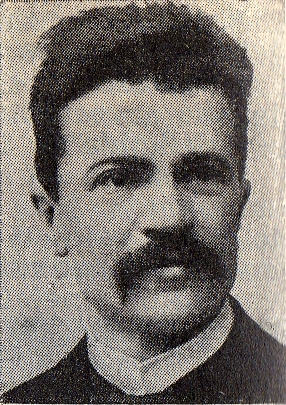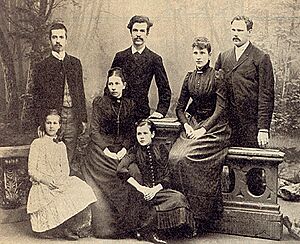Kaarle Krohn facts for kids
Quick facts for kids
Kaarle Krohn
|
|
|---|---|
 |
|
| Born | 10 May 1863 |
| Died | 19 July 1933 (aged 70) |
| Academic background | |
| Alma mater | University of Helsinki |
| Influences | Julius Krohn, Elias Lonnrot |
| Academic work | |
| School or tradition | Fennoman |
| Main interests | Finnish mythology, Kalevala Scholarship |
Kaarle Krohn (10 May 1863 – 19 July 1933) was a Finnish folklorist, professor and developer of the geographic-historic method of folklore research. He was born into the influential Krohn family of Helsinki. Krohn is best known outside of Finland for his contributions to international folktale research. He devoted most of his life to the study of the epic poetry that forms the basis for the Finnish national epic, the Kalevala.
Early life

Krohn was born in Helsinki. He was the son of journalist and poet Julius Krohn, and his sisters were Aune, Helmi and Aino Kallas, who were Finnish authors. Krohn is best known outside of Finland for his contributions to international folktale research.
Krohn passed his matriculation exams in 1880, earned his candidacy degree in 1883 at University of Helsinki, and completed his doctorate in 1888. At the age of 18, he conducted field research in northern Karelia. From January 1884 to June 1885, he traveled through Finland collecting samples of Finnish folklore. During his collecting, he focused mainly on folktales because he thought they had been overlooked in the search for epic songs. His doctoral thesis, "Bär (Wolf) und Fuchs, eine nordische Tiermärchenkette [Bear (wolf) and fox: A Nordic animal-tale chain (1888)", based on his folktale collection and using his father's historical-geographical method, won him an immediate international reputation and brought him fast academic advancement.
Career
In 1888, he was named docent of Finnish and comparative literature at University of Helsinki. In 1889, he was named acting professor of Finnish and Finnish literature and in 1898, extraordinary personal professor of Finnish and comparative folklore. In 1898, Krohn became a full professor at the University of Helsinki for Finnish and comparative folklore. Later, in 1908, when a permanent chair in Finnish and comparative folklore was established, he became its first occupant. In 1907, he created the Federation of Folklore Fellows' Communications with his friends Johannes Bolte and Axel Olrik. In 1917, he became a chairman of the Finnish Literature Society (Suomalaisen Kirjallisuuden Seura). Krohn was a co-founder of the magazines Virittäjä (1896) and Finno-ugrische Forschungen (Finno-Ugric research) together with Emil Nestor Setälä (1901). He was also famous for his 'historical-geographical' approach to comparing folklore texts.
In 1918, Krohn published Kalevalankysymyksia (Kalevala Questions), a two-volume handbook designed for students of Finnish Folk poetry. In Kalevala Questions Krohn completely reworked his position on the historicity of the Kalevala. Krohn had previously argued that the Kalevala evolved from small "poetic germ cells" that merged to form a heroic epic. In Kalevala Questions he instead took the position that the poems were born as complete works, and had fragmented over time. Krohn argued that the poems were composed at the same time as the Scandinavian Viking Age, and were accounts of real historical events. This was in stark contrast to his previous view of the Kalevala as a work of Medieval origin that borrowed significantly from hagiography. While Krohn attributed his change in opinion to his further analysis of "observed facts," he also admitted the influence of the political climate that had emerged following Russification and the Finnish Declaration of Independence. Writing for the nationalist paper Uusi Suomi in defense of his new position, Krohn stated that "The formerly peaceful nation of Finland has become militaristic [...] Kalevala scholarship has followed the same road." Eight years later, he reworked the book for a foreign audience, added folktale examples and published it as Die folkloristiche Arbeitsmethode (Folklore Methodology), which since that time has served as the standard reference work for the Finnish Method.
In 1932, a year before he died, Krohn returned once more to folklore research. He published a review of international folktale scholarship that was based largely on the methodological approach he had developed, called Übersicht über einige Resultate der Märchenforschung (A Review of Some Results of Folktale Research).

